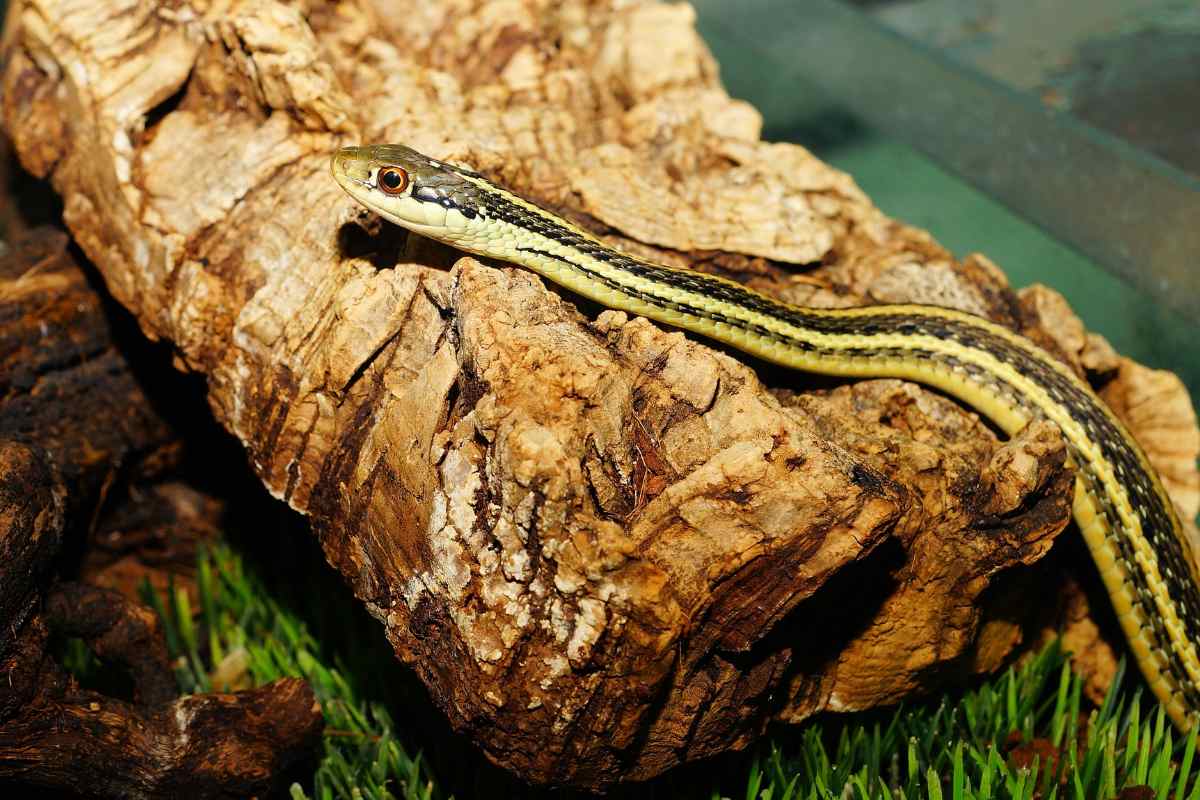
A UAlberta undergraduate student, supervised in the Department of Biological Sciences, is lead author on a new study looking at the Plains garter snake (pictured) skull in greater detail than ever before-and what this common Albertan animal can tell us about snake evolution.
An undergraduate student has published a new study examining what the common Plains garter snake of Alberta can tell us about the evolution of reptiles-by conducting the first-ever detailed imaging of snake skulls at several stages of their development.
"There is a huge gap in our knowledge of the development of lizards and snakes," said Catie Strong, lead author of the study, whose research was supervised by Professor Michael Caldwell in the University of Alberta's Department of Biological Sciences, "Prior to this research, no one had ever published a study of the skull in this level of detail through the lifespan of any lizard or snake."
The biologists used micro-computed tomography (micro-CT) techniques to examine Plains garter snake skulls throughout their lifespan, from embryo to juvenile to adult. The technology-similar to that used in hospital CT scans, but on a much smaller and more detailed scale-yields new insight into how snakes develop and how they may have evolved, as Caldwell explains.
"Garter snakes are 'common,' and in being common, we run the risk of assuming that we already know everything we need to know about them," said Caldwell. "In taking this closer look, we've dispelled assumptions about the anatomy of their skulls-and any time we can dispel dogma and replace it with hypotheses supported by evidence we've done something significant."
Turning tradition on its head
"We found that snake skull evolution is a lot more complex than previously realized," said Strong. "For example, garter snakes are unique in how they develop the classic snake ability to eat large prey items. These findings challenge widespread assumptions in the scientific community about how snakes have evolved."
By combining new technology like micro-CT scanning with more traditional anatomical descriptions, biologists have a versatile way to fill gaps in our knowledge-an opportunity Strong is happy to contribute to as an undergraduate student.
"This experience was incredibly influential to me as a young researcher. This study is the result of an undergraduate research course I took in my third year, and being able to get this kind of hands-on experience is something that's quite rare for an undergrad student," said Strong, who plans to continue her studies as a masters student at UAlberta.
The paper, "Cranial ontogeny of Thamnophis radix (Serpentes: Colubroidea) with a re-evaluation of current paradigms of snake skull evolution," was published in Royal Society Open Science (doi:10.1098/rsos.182228).